When looking for a quality grouting mortar, Flowpoint should be high on the list of any discerning hardscape contractor. Sadly there are many misconceptions in the paving industry about slurry jointing in general, so we thought it time to bust the common Flowpoint myths through the first-hand experience of a few landscaping experts.

What's the fuss about Flowpoint?
First up, if you haven’t heard about Flowpoint before (under which rock have you been hiding?), Flowpoint is a cementitious, premixed formula that you add to water to create a wet slurry grout.
Fully compliant with the British Standard BS7533, Flowpoint is applied to damp paving surfaces and contractors use a rubber squeegee to work the cementitious slurry into the joints before washing the mixture off the slab surfaces.
On the surface (excuse the pun), the alternative of pointing with a 3:1 mortar mix of cement and sand will look like it saves you money.
But in the long run, the formula can be confusing to calculate and immensely back-breaking to apply. Not only that, 3:1 mixture can cause a lot of unnecessary extra mess on site.
Premixed paving mortars, such as Flowpoint wet slurry, or PremJoint brush-in grouts, make the pointing process incredibly easy by taking away the guesswork.
With a premixed grout, you have a reliable, quality product that you know will last the course of the patio. And you can spend more time perfecting those joints and achieving a pristine finish for your clients.
Why some landscapers are reluctant to try slurry jointing
We asked Gareth Wilson about why some landscapers are reluctant to switch to a slurry jointing mortar like Flowpoint.
After 30 years in the landscaping trade and winning 30 Royal Horticulture Show (RHS) awards for show garden construction, today Derbyshire-based Gareth is an expert witness in hard landscaping offering independent statements of opinion when communications break down between contractors and clients.
Gareth explains, “I’ll be dead honest with you. Some landscapers are stuck in their ways and they don’t like change. Their attitude is, ‘I’ve been doing this for 20 years… Why should I change now?’.”
He adds that some landscapers are “quite rightly scared” when they consider pouring Flowpoint onto their slabs.
“At the end of the day, you are pouring a cementitious slurry directly onto the pavers. It goes against everything that you’ve been taught and you should do.
“But Flowpoint has been developed so it doesn’t stick to the paving.”
Gareth shares about the benefits of Flowpoint: “In addition to its British Standard rating and the strength of the product, it’s also the speed at which you can install it.
“If you’re going to be on your hands and knees, for example, with a trowel and a three-to-one mortar mix, it will take you about five times as long to install, compared with using Flowpoint.
“Flowpoint is just so easy and quick to install that it makes you money!” he enthuses. “It’s a well-priced product and, in my view, a landscaper’s friend.
“Ultimately, it means less time on the job and more profit in your pocket.”
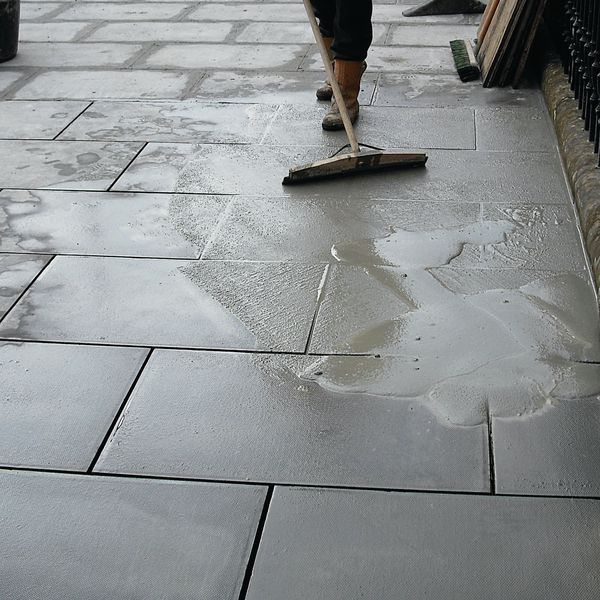
Common Flowpoint myths
So let’s get on to busting those common Flowpoint myths. If you have any more to add to our list, add them in the comments below or share your personal experience of grouting with Flowpoint.
Myth #1: Flowpoint is new to the market
If you’ve only recently come across Flowpoint, you might be surprised to hear that this slurry grout was developed by Instarmac some 25 years ago and has been used on thousands of major projects around the world ever since, and as far afield as New Zealand, Norway, America and Dubai.
It is only in the last nine years that Flowpoint’s formula was launched for the domestic market, explaining the more recent chatter about its benefits.
Here’s a quick insight into the history of Flowpoint, if you’re excited about that kind of thing:
Back in the late 1990s, a project engineer in Scotland was managing the installation of cobbles in a town centre and was perturbed about the number of paving contractors pointing cobblestones on their hands and knees. He could see that pointing by hand was time consuming, costly and labour intensive – and not at all helpful to his contractors’ knees and backs.
This project engineer went to Instarmac, the manufacturer of today’s Flowpoint, to see if they could find a solution to this ongoing problem.
In response, Instarmac formulated Flowpoint: a revolutionary pourable slurry mortar. Instarmac sent bags of the new formula up to the engineer in Scotland to trial. He loved the new slurry grout that much that he ordered a number of pallets.
In fact, the grouting for that project has stood the test of time and still stands today.

Myth #2: Flowpoint requires specialist equipment
Some contractors think you need lots of fancy tools to use Flowpoint. The good news is: you don’t!
Gareth confirms that the only extra equipment you need is a 110v paddle mixer and a rubber squeegee with a long pole.
Other required items for Flowpoint are often essential tools for applying most paving grouts and likely to be in every paving contractor’s toolkit.
These extra items include:
- Transformer to safely provide power to outdoor tools
- Extension lead
- Large bucket for mixing
- Large measuring jug for adding correct amount of water
- Rubber float to remove grout from awkward areas
- Small trowel
- Small paint brush for cleaning tools
- Jet washer, a hosepipe or washboy
- Wellies
- Sponge for cleaning around the edges
- Leaf blower (optional)
“My lads will use a hand (leaf) blower to blow all of the moisture and debris out of the joints,” explains Gareth. “They get the joints all nice and clean and make sure they contain no standing water before applying Flowpoint.”
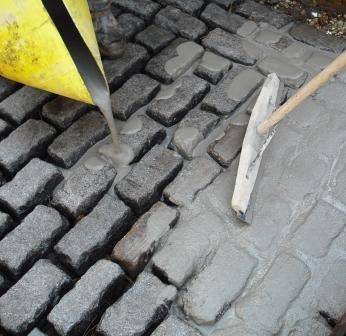
Myth #3: Flowpoint should only be used by experienced contractors
Time and time again we see in the industry forums some hard landscaping contractors saying that Flowpoint is ‘scary’ and ‘not for the faint hearted’.
Although many of these landscapers see the effectiveness of slurry jointing and how much time it can save you – not to mention the pressure it saves on your knees and back – some contractors say you still need a fair amount of bravery and experience to use it.
“I don’t care who you are or how good you are, if you don’t have a little bit of anxiety about pouring cementitious slurry onto the surface of your slabs, then you’re telling a few porkie pies!,” exclaims Gareth.
But he adds that a little careful timing is all it takes and that after watching a demo, you’ll be well away using Flowpoint yourself.
“It’s like anything: it’s easy to do once you know how. Instarmac did a demo for me and my lads three years ago and that was it – we were away!”
Like any product that you’re new to, it’s always best to take note of the manufacturer’s instructions and to watch a couple of videos. The bonus for contractors using Flowpoint for the first time is that if you are nervous, give us a call and we can speak to the manufacturer to see if they’ll visit your site to do a demo.
“Once you’ve seen it done, you can see that it’s dead easy to use and install. All you need is a little bit of training and a little bit of know-how with it.”
There’s plenty of info online about how to apply Flowpoint. TJ Construction demonstrates applying Flowpoint in the video below. Also see our Flowpoint FAQs for more details, or get in touch with our team.
Myth #4: Flowpoint sticks like glue to pavers
Yes, Flowpoint is a rapid-setting grout. But despite this, it doesn’t ‘set in a flash’. All you need to do is keep the area damp and plan your operations around hot outdoor temperatures.
“You don’t use Flowpoint when the temperature is too high,” explains Gareth. “When the temperature is approaching 30 degrees, just don’t bother. Or if you’re desperate to get the job finished, do it at 6 o’clock in the morning.
“In the winter you’ve got plenty of mixing time and plenty of curing time so that won’t be an issue.”
Myth #5: Flowpoint causes cracking and low spots
Some contractors have said that Flowpoint causes cracks and low spots.
This may be caused by cleaning off Flowpoint too early during colder weather and washing half the material away.
Knowing when to wash-off Flowpoint may seem daunting at first, but there are key tests that you can do to get your timing spot-on.
Some experienced contractors, like Gareth, recommend a thumb test or waiting until the joints are “finger-touch ready”. This involves lightly touching the filled joints with your thumb and checking whether an imprint is left behind. If there’s no thumbprint, then the grout has properly set.
David Gay, from the team at Instarmac’s UltraScape advises, “Another way to understand when to wait to wash off Flowpoint would be if the product is still bleeding from the joint.”
In other words, if the product is still ‘bleeding’, then it’s still not time to wash it off.
He continues, “You need to make sure that Flowpoint is set in the joint but not on the surface, keep it aggregated and damp on the slab, as soon as the joint is firm enough to repel the water you can power wash or increase water flow.”

Myth #6: Flowpoint can be used on every type of paving element
Flowpoint is a highly adaptive grout and can be used on most paving elements including sandstone, Indian stone, granite setts, cobbles, clay pavers, limestone, slate and ceramics. In fact, Flowpoint can be used with most types of common manmade stone.
The only exception to this is that Flowpoint should not be used with black limestone. At the Paving Experts, we don’t recommend using Flowpoint with black limestone as it can oxidise and leave staining.
Myth #7: Flowpoint creates efflorescence
On the subject of staining, if you’ve avoided using Flowpoint in the past due to a fear of ending up with efflorescence staining on your pavers, it’s time to revisit this common myth.
We asked Gareth whether Flowpoint creates efflorescence. He quickly replied, “That’s absolute rubbish!
“I started to use Flowpoint when I was still running my landscaping business three years ago, and now every single one of my lads at that business – who I’m in contact with every single day – all use Flowpoint to this day. And we’ve never had any efflorescence. In fact, we’ve never had any issues.”
When applied correctly (after a simple demo and bit of guidance), Flowpoint does not create reflective stains or efflorescence.
Gareth adds, “The only way you’re going to get efflorescence is if you haven’t let the mortar bed dry out for long enough, or if you’ve watered the joints (directly with a pressure washer) or put too much water in the Flowpoing mix itself.”
Read the full article on how to avoid efflorescence staining.
Myth #8: Paving surfaces must be kept completely wet
Another common myth that we come across is that you need to keep your paving area completely wet when working with Flowpoint.
In actual fact, you just need to keep the area constantly damp, but never saturated. If you see any pooled water, then you are completely overwatering the surfaces.
Director of MPave Ltd in Warwickshire, Mark Talbot, is no stranger to large commercial paving projects and says he has “come to respect Ultrascape’s Pro-Prime and Flowpoint”.
“My biggest tip is to make sure all surfaces remain damp throughout the process, but with no visibly pooled water,” he shares. “Never allow the grout to dry if you are still applying it.”
Aim for a very light spray to keep the paving area damp. Putting too much water onto the pavers can add additional water into the Flowpoint mix, and this can lead to cracking and mortar failure.
“When installed correctly,” adds Mark, “in our opinion, there is nothing else on the market that can match the strength and longevity of Flowpoint and Pro-Prime.”
Read the full article from Mark about his expert tips on grouting with Flowpoint.
Myth #9: Slabs must sit for days before grouting with Flowpoint
Read some forums and you may leave with the impression that if you use Flowpoint you must wait 28 days after bedding your slabs before pointing.
This is completely incorrect. Normally you can grout pavers with Flowpoint the following day after you have laid them.
Deciding when to grout depends on many factors. Most of all you need to check that the bedding mortar has properly gone off.
Check the bed is solid and the mortar is properly set. You should also check that there is no visible dampness left at all before starting the grouting stage.

Share your common myths about Flowpoint
Have we missed a common myth about Flowpoint? Maybe you’ve used Flowpoint yourself and would like to share your insight. Add your comments below – we’d love to hear about your personal experiences.
If you’d like some extra guidance on using Flowpoint, our team of experts is more than happy to lend a hand. Give us a call and we can talk you through the process or even put you in touch with Instarmac to arrange a demo for your team.
We’re always sharing more insider tips on using Flowpoint and other popular paving products. Stay in the loop by following us on Facebook and Twitter.
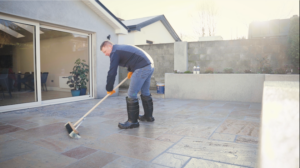
The 5 Benefits of Resin Grouting with Joint-It Dynamic
Explore the perks of resin grouting with Joint-It Dynamic & how this robust patio grout can save your paving business money. Includes expert installation tips.
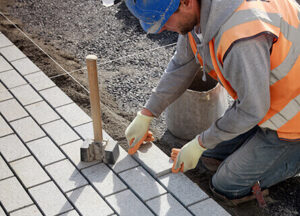
How to Lay a Patio
Paving for the first time? The foundational work is crucial to avoid future problems. Follow these 8 essential steps on how to lay a patio like a professional.
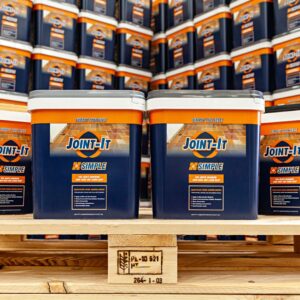
The Essential Guide to Joint-It Simple Patio Grout
All the ins and outs of Joint-It Simple Patio Grout. Find out whether to pre-seal plus the easy 4-step process for installing this 100% permeable & reliably durable grout.
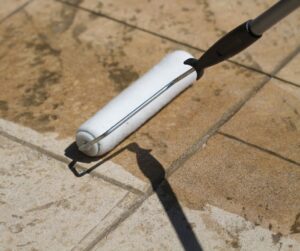
Should I Seal My Patio?
Decide whether to seal your patio in this in-depth guide. Discover which stones should be sealed, the best products to use, plus expert tips on when to seal a patio.

Flowpoint paving grout used at the Citadelle of Namur
Belgium’s historic fortress, Citadelle of Namur, is one of the latest projects to be grouted with Flowpoint paving grout. Find out why it was chosen and all about the job.

Uncover the Magic of Joint-It Paving Grouts and Sealant
Want minimum effort with maximum results? Explore the range of Joint-It paving grouts, including epoxy grouts and a brush-in grout. Loved by pros & homeowners.

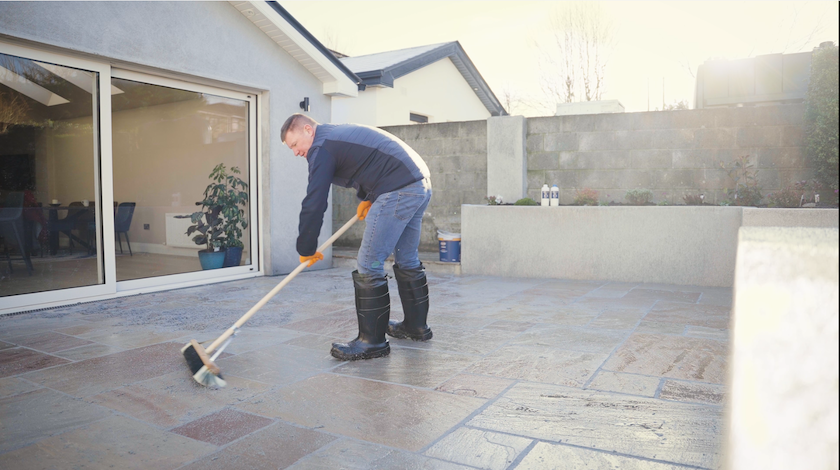
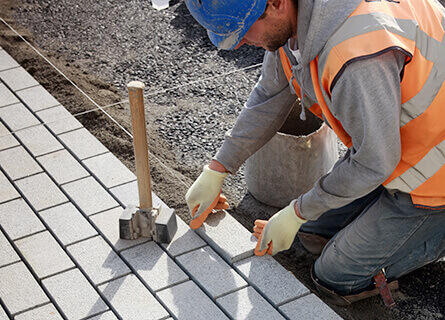
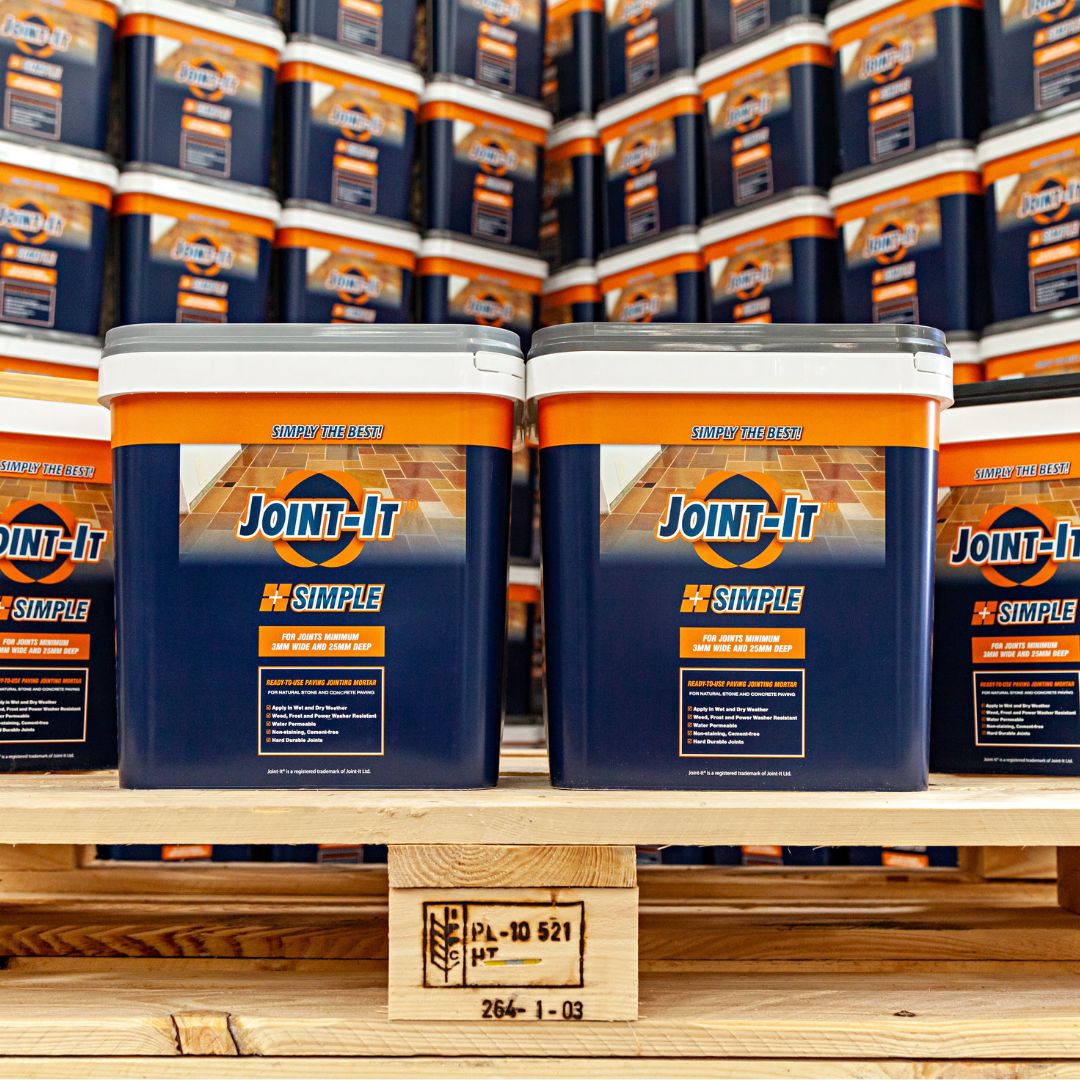
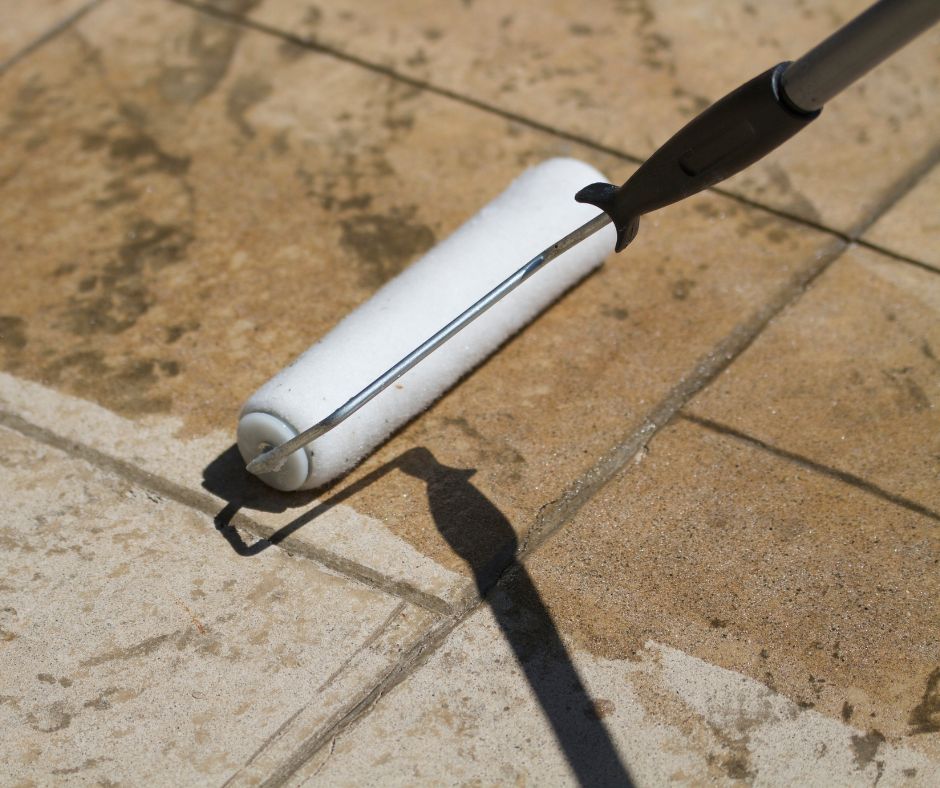

2 thoughts on “9 Flowpoint myths, busted by landscaping experts”
When giving advice on the use of flowpoin, don’t forget to mention drainage no no’s and reseted inspection cover and frame issues.
Have only read your page on myths and sure you probably have it covered but if not the only way to access a chamber is break the entire iron works (frame and all)
Hello Jim, thank you very much for the advice, we’ll be sure to make a note of this for the next blog post we write. Thank you, Cleo.